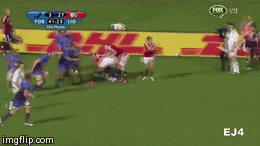Ireland’s back-row options for the Guinness Series are heavy on grit but short of that destructive, ball-carrying element that made in World Cup class of 2011 such a potent force.
Perhaps it speaks to the destructive nature modern ball-carriers must possess but only one of that trio – Stephen Ferris, Sean O’Brien and Jamie Heaslip – is ticking over. Ferris retired in May while O’Brien is in rehab after undergoing a second procedure on a damaged shoulder in ten months. Cian Healy, another source of go-forward ball, is out of commission for another five months while Donnacha Ryan (also injured) will be missed when it comes to heaving over the gainline.
Sean Cronin, who has been in excellent form for Leinster this season, is recovering from a summer-time shoulder operation and may be selected at hooker ahead of Leinster colleague Richardt Strauss as Ireland seek to make November inroads. Joe Schmidt will rely on Heaslip more than ever this month and needs the Leinster captain to replicate his form of recent weeks.
Ireland have seven back rows in their Guinness Series squad but breakdown nous trumps broken play threats. Looking at the last set of Champions Cup fixtures, Heaslip was far and away the best back-row carrier.
- Jamie Heaslip – 20 carries for 55 metres (one defender beaten)
- Chris Henry – Eight carries for no gain
- Robbie Diack – Six carries for two metres
- Dominic Ryan – 11 carries for five metres
- Rhys Ruddock – 11 carries for six metres
- Tommy O’Donnell – Five carries for six metres
- Peter O’Mahony – 10 carries for 19 metres (one defender beaten)
CJ Stander (17 carries for 42 metres gained and three defenders beaten) was the next best from the provinces’ forwards but will not qualify for Ireland until next season, just before the World Cup. The South African is currently keeping Robin Copeland out of the Munster team.
Heaslip has been described by Leinster team-mates and coaches as a selfless worker and a link-man to strike runners. His breakdown work is a necessary, effective and he revels in clearing out rucks, something which proved crucial during the Six Nations. It must be noted that the back-row of Peter O’Mahony, Chris Henry and Heaslip did not do too bad for itself in last season’s. Still, Ireland need Heaslip to revert to his ball-carrying best if they are to avoid the slog South Africa’s groundhogs will be eager to create.
Heaslip, at his bulldozing best, is a tough man to take down, drawing in additional bodies. This was seen in the lead-up to Darragh Fanning’s first-half try against Wasps as the Leinster No.8 beat two defenders and needed two more to wrest him to the turf (circled below). Eoin Reddan arrived on the scene, spotted the space and fed Jimmy Gopperth. The Kiwi was part of a three-on-one against Sailosi Tagicakibau and grubbered behind to set up Fanning for a simple try.
Heaslip is best utilised off the back of mauls, set plays and coming onto the ball at speed. This was demonstrated to devastating effect on the Lions tours of 2009 and, as seen in this clip against Western Force, 2013.
Heaslip will never be the same player Irish supporters first witnessed in 2007 and roared on as he sliced through the French defence in 2009.
He has added to his all-round game and is too valuable in close to linger with the backs. His carries will need to be all sorts of everything – six inch gains to thirty metre game-changers – if Ireland are to dictate terms against the Springboks and Wallabies this November.







































